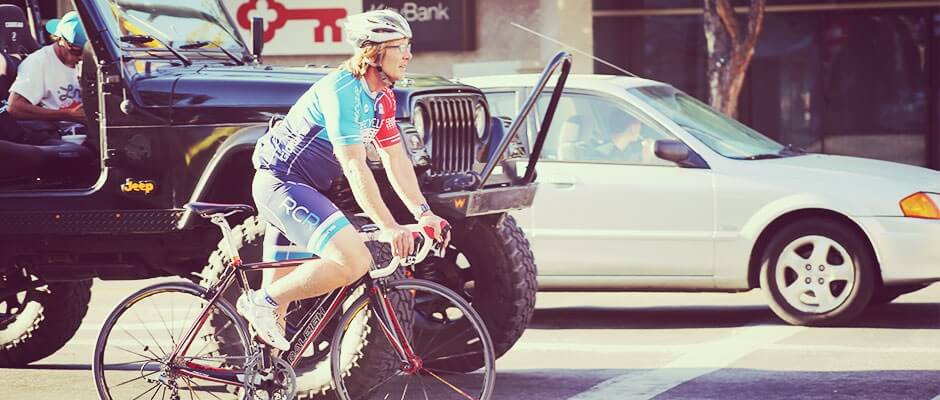Cycling is one of the healthiest, cheapest, most environmentally-friendly forms of transport available. However its reputation is often fraught with safety concerns.
The facts¹
In 2013, 109 pedal cyclists were killed in an accident on British roads while over 3000 were seriously injured.²
3 in 4 cycling accidents happen at, or near, a road junction. In collisions involving a bicycle and another vehicle, the most common key contributory factor recorded by the police is ‘failed to look properly’ by either the driver or rider – especially at junctions. ‘Failed to look properly’ was attributed to the car driver in 57% of serious collisions and to the cyclist in 43% of serious collisions at junctions.
Around 80% of cycling accidents occur in daylight which is when most cycling takes place. However, cycling accidents in the dark are more likely to be fatal.
Unfortunately, it’s likely that these statistics underestimate the number of road accidents involving cyclists, as many are not reported to the police.
Although cyclists are undoubtedly vulnerable road users, there are several things you can do to help keep yourself as safe as possible while cycling on the roads. Here’s The Highway Code’s advice:
Clothing³
- Wear a cycle helmet which conforms to current regulations, is the correct size and securely fastened.
- Wear appropriate light-coloured or fluorescent clothing which helps other road users to see you in daylight and poor light. Make sure the clothing is appropriate and won’t obscure your lights or get tangled in the chain of your bike.
- Wear reflective clothing and/or accessories in the dark.

Your bicycle⁴
At night your bicycle must have white front and red rear lights lit. It must also be fitted with a red rear reflector (and amber pedal reflectors, if manufactured after 1/10/85). These should be kept clean and in good working order.
- It is recommended that a bell is fitted to your bike to warn pedestrians of your presence where necessary.
- Tyres should be in good condition and inflated to the correct pressure (as shown on the tyre).
- Gears and brakes must be working correctly.
- The chain should be properly adjusted and oiled.
- The saddle and handlebars must be adjusted to the appropriate height.
- When parking your bicycle, don’t leave it where it would cause an obstruction or hazard to other road users and make sure you secure it well.
General guidance⁵
- Keep within the cycle lane when practicable. When leaving a cycle lane, check before pulling out that it is safe to do so and signal your intention clearly to other road users.
- Never ride more than two abreast, and ride in single file on narrow/busy roads and when riding round bends.
- Look well ahead for obstructions in the road, such as drains, pot-holes and parked vehicles so that you don’t have to swerve suddenly to avoid them.
- Don’t cross the stop line when the traffic lights are red. Some junctions have an advanced stop line that let you position yourself ahead of other traffic while you wait.
- Pay particular attention to long vehicles which need a lot of room to manoeuvre at corners.
- Never cycle on the pavement.
- Don’t ride too closely behind another vehicle and be aware of traffic coming up behind you.
Here’s a handy training film by Transport for London about how to cycle safely around lorry drivers:
Are you a driver? Here is our advice on how to safely share the road with cyclists.
Sources:
[1] http://www.rospa.com/roadsafety/adviceandinformation/cycling/facts-figures.aspx
[2] https://www.gov.uk/government/uploads/system/uploads/attachment_data/file/324580/rrcgb-main-results-2013.pdf
[3] [4] [5] https://www.gov.uk/rules-for-cyclists-59-to-82
